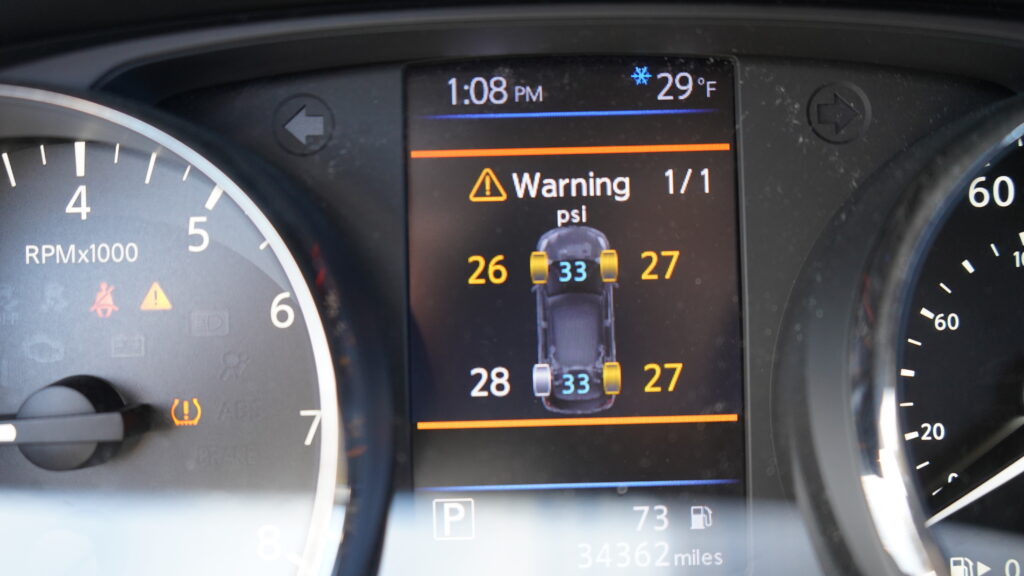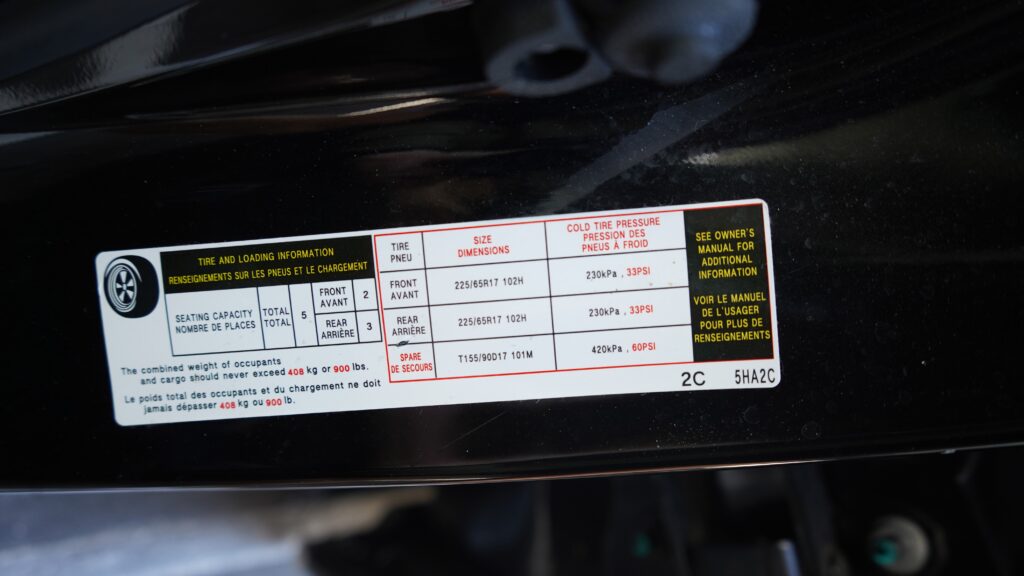Imagine waking up to a cold winter morning, heading out to your car, and noticing a warning light on your dashboard. It’s the Tire Pressure Monitoring System (TPMS) light, a common occurrence in colder months. Let’s talk about why it happens and how to address it.
How Does Cold Weather Affect Tire Pressure?
Cold weather affects tire pressure because the air inside tires contracts in lower temperatures. This can lead to a drop in pressure, impacting your vehicle’s performance and safety, especially in winter conditions. Proper tire pressure is crucial for optimal traction and handling.
What to Do When TPMS Light is On:
- Check your tire pressure using a gauge.
- Inflate your tires to the recommended pressure if low.
- Regularly monitor tire pressure, especially in winter.
- Consider using nitrogen for more stable pressure.
- If unsure, get a professional inspection for damage or leaks.
Can Underinflated Tires Cause Issues?
Driving with underinflated tires can cause many problems. It makes your vehicle use more fuel because the tires don’t roll as easily. This can cost you more money over time. Also, underinflated tires wear out unevenly, with the edges wearing down faster. This means you might need to replace them more often, costing you even more money. Plus, underinflated tires make your vehicle handle and brake less effectively, making it less stable and responsive on the road. Overall, keeping the right tire pressure is crucial for using less fuel, making your tires last longer, and staying safe while driving.

Underinflated tires can cause these problems:
- Reduced fuel efficiency
- Uneven tire wear
- Decreased handling and braking performance
- Increased risk of accidents, especially in emergency situations
Can Overinflated Tires Cause Issues?
Driving with overinflated tires can cause problems. First, they have less grip on the road, leading to uneven wear and less traction, especially in wet or slippery conditions. This can affect how well your vehicle handles and brakes, especially in challenging situations. Also, overinflated tires are more likely to get damaged from things like potholes, as they can’t absorb impacts well. The extra pressure makes the tires stiff, resulting in a bumpier and less comfortable driving experience. There’s also a higher risk of a tire bursting, making your journey more risky.
Overinflated tires can cause these problems:
- Less grip
- Uneven wear
- Bumpy ride
- Higher risk of blowouts
How To Check Your Tire Pressures
Checking your tire pressure is easy! Get a tire pressure gauge from an auto store. Take off the valve cap, press the gauge onto the valve, and check the number it shows. To find the right pressure, look in your car’s manual or on a sticker on the driver’s side door.

This sticker has the recommended PSI (pounds per square inch) for each tire. Make sure all tires, including the spare, match this number. If the pressure is low, use an air compressor at home or go to a gas station to fill them up. Doing this regularly keeps your tires at the right pressure.
Understanding tire pressure dynamics in cold weather and during driving is crucial for maintaining optimal tire performance and safety. Regularly checking and maintaining the correct tire pressure ensures safer driving, longer tire life, and improved fuel efficiency. If you have persistent issues, seek professional inspection for peace of mind and safe travels.
If you have any concerns about your tire pressures or if your light comes on, Feel free to swing by any of our x locations and we would love to check them for you!
0 Comments